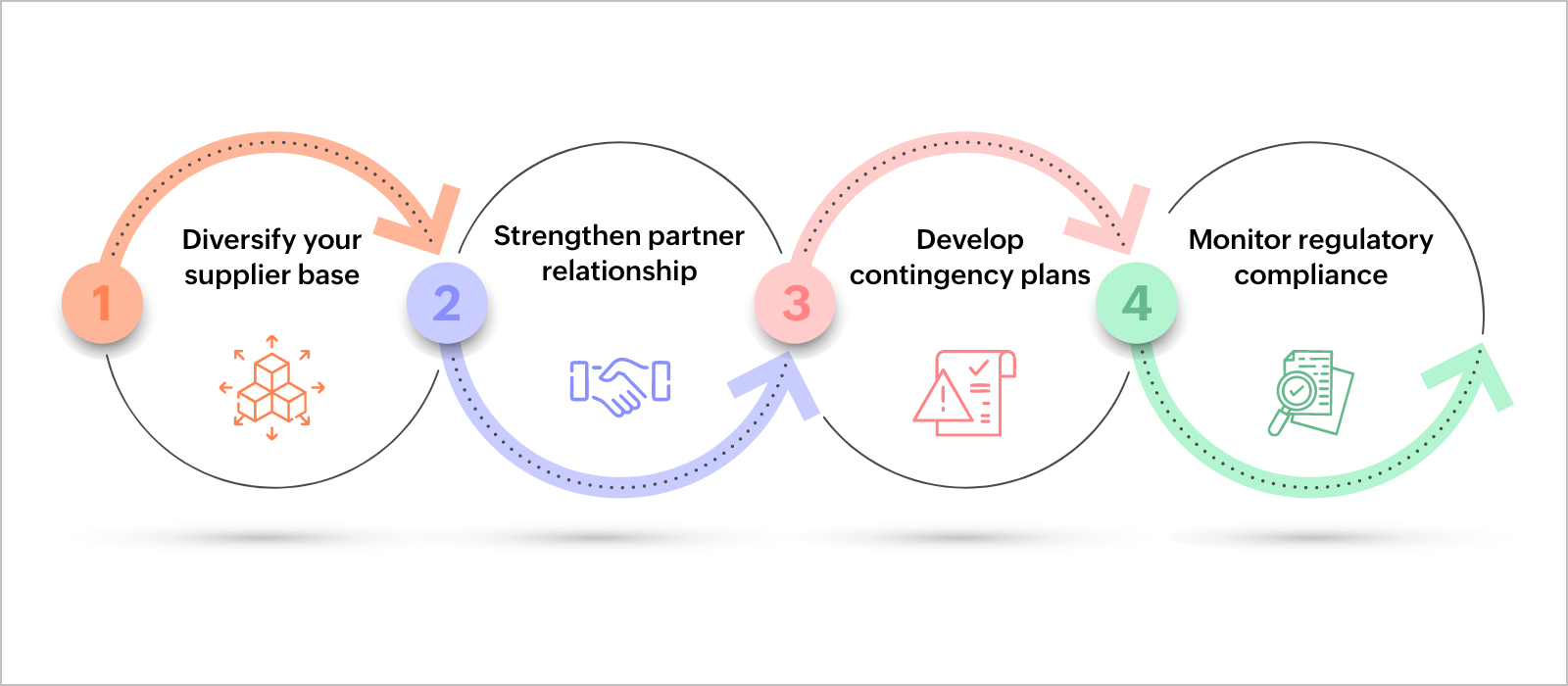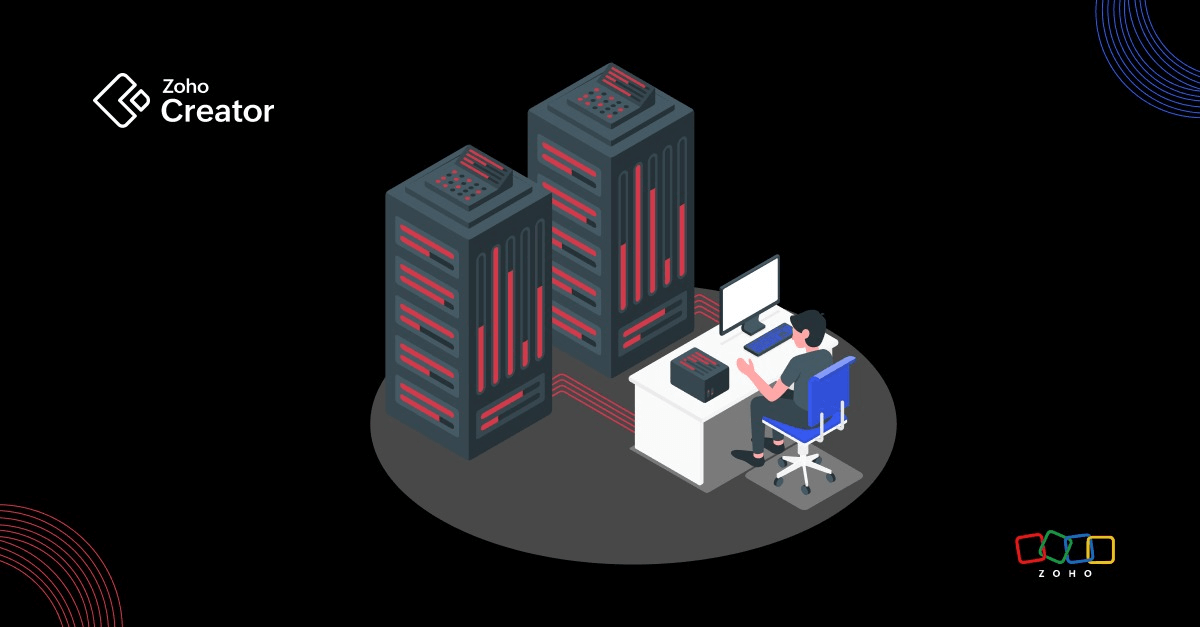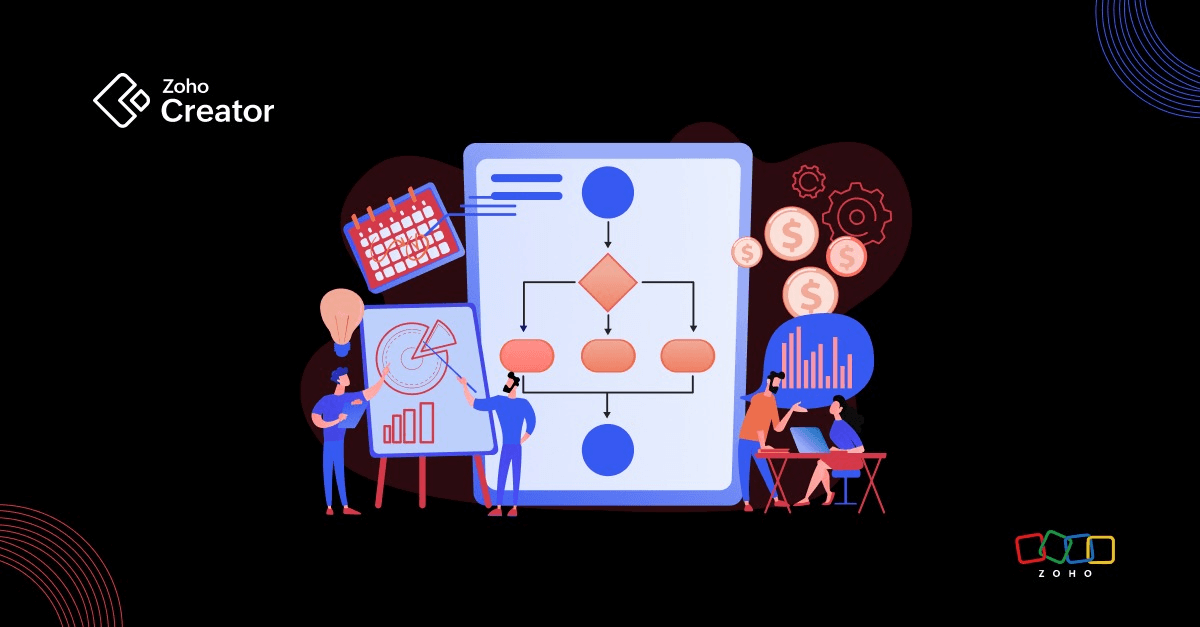- HOME
- Know Your Tech
- Why supply chain management is essential for SMEs
Why supply chain management is essential for SMEs
- Last Updated : June 20, 2025
- 310 Views
- 10 Min Read
Running a small or mid-sized business comes with its fair share of daily challenges, especially when managing supply chains. Broader surveys of supply chain leaders show that 90% of supply chain executives across industries encountered some form of supply chain challenge in 2024. An efficient supply chain is imperative for businesses looking to compete and grow.
That’s where supply chain management software steps in as a practical solution to everyday operational problems. Switching to a proper supply chain management system streamlines your workflows, cuts down errors, and provides real-time visibility across your operations. This means you can make smarter decisions faster and respond quickly to changes in demand or supply.
In this blog post, you’ll discover why supply chain management matters for SMEs, the challenges it solves, and how adopting supply chain software can transform their business. Read on to learn how to improve efficiency, boost customer satisfaction, and position your business for long-term success.
What is supply chain management?
Supply chain management, or SCM, refers to the coordination of all activities involved in producing and delivering a product. It covers everything from sourcing raw materials to manufacturing, storage, and final delivery to customers. The goal is simple: Get the right product to the right place at the right time without wasting resources.
Effective supply chain management connects every step in this process, ensuring smooth communication and coordination among suppliers, manufacturers, warehouses, and distributors. It helps businesses avoid costly delays, reduce inventory overhead, and keep customers satisfied.
The five stages of SCM start with planning, where demand is forecasted and operations are strategized. Next is sourcing, involving the selection of suppliers and procurement of materials. The production stage focuses on manufacturing and assembling products. Following that, distribution ensures products reach customers efficiently. Finally, the returns stage manages product returns and reverse logistics, completing the supply chain cycle.
Different forms of supply chain management
Supply chain management isn’t one-size-fits-all. Depending on business needs, there are different ways to approach it:
Lean supply chain management focuses on cutting waste and improving efficiency. It aims to produce and deliver only what is needed, when it’s needed, reducing excess inventory and speeding up delivery times.
Agile supply chain management emphasizes flexibility. It prepares businesses to quickly respond to changes in demand or disruptions, making it ideal for industries where customer preferences shift often.
Integrated supply chain management takes a holistic view, connecting all partners in the chain through shared information and collaborative planning. This approach reduces silos and fosters better decision-making.
Green supply chain management adds an environmental focus, aiming to minimize the ecological footprint of sourcing, production, and distribution activities.
Each approach addresses specific challenges, but all share the goal of improving visibility, control, and efficiency across the supply chain.
Importance of supply chain management for SMEs
For a business to grow sustainably, every function must run in sync. That includes how raw materials turn into finished goods and reach your customers. Supply chain for SMEs brings structure and intelligence to this process, helping you move from reactive firefighting to proactive control. Here’s what you gain when you implement the right SCM system:
Improved efficiency across the board
SCM removes manual bottlenecks and reduces repetitive tasks. With automated workflows, integrated data, and connected teams, your supply chain runs faster and cleaner. This means fewer errors, shorter lead times, and smoother coordination, all without adding extra hands.
Higher productivity in daily operations
A well-structured supply chain automates routine tasks like order tracking and inventory updates, freeing your team to focus on value-adding work and boosting overall productivity.
Streamlined processes that save costs
Disconnected systems and redundant steps inflate costs. SCM connects your procurement, production, and logistics, eliminating unnecessary tasks and reducing overhead. Whether it’s through bulk purchasing insights or optimizing delivery routes, better coordination leads to better margins.
Scalability as your business grows
As demand increases, you need systems that grow with you. A good SCM platform makes it easier to handle larger order volumes, manage more suppliers, and expand into new regions without stretching your team too thin.
Flexibility to respond to changes
Markets shift. Suppliers delay. Customers change their minds. With a flexible supply chain, you can quickly adapt. Adjusting quantities, rerouting shipments, or introducing new stock-keeping units becomes easier when your systems are connected and your data is current.
Stronger supplier and customer relationships
SCM systems make collaboration simpler. Suppliers know what you need and when. Customers get updates and receive orders on time. Transparency builds trust, and trust keeps business relationships strong.
Better inventory planning
Having too much stock ties up money. Having too little risks sales. SCM helps you strike the right balance by tracking stock levels in real time, forecasting demand, and automating reorder points. This precision saves space, reduces spoilage, and improves cash flow.
Happier customers
At the end of the day, reliable supply chains deliver reliable experiences. When you consistently meet delivery timelines and product quality, customers notice, and they return.
Example of the supply chain management process
Let’s say you run a business that sells eco-friendly home cleaning products. You source ingredients like natural oils and plant-based surfactants from suppliers in different regions. You also rely on packaging vendors, manufacturing partners, warehousing providers, and a delivery service to get the final product to your customers.
Without supply chain management, here’s what might happen:
You place orders manually. Inventory tracking is done in spreadsheets. One supplier misses a shipment, but no one notices until your warehouse runs low. Production gets delayed. Customer orders pile up. And you’re left scrambling to find out what went wrong and where.
Here’s how the same scenario looks with an SCM system in place:
As soon as your inventory of ingredients drops below a set level, the system automatically sends out a purchase order.
Real-time tracking helps you see if a shipment is delayed and alerts you before it becomes a problem.
Production is planned based on available inventory and current demand, keeping output consistent.
Your team knows exactly what’s in stock, what’s in transit, and when orders will be fulfilled.
Customers receive updates on their orders and get them on time.
In short, the entire process, from sourcing to delivery, becomes connected, transparent, and manageable. Understanding how a connected supply chain works in practice sets the stage for the next step: finding the right tool to make it happen. That’s where supply chain management software comes in.
What is supply chain management software?
Supply chain management software (SCMS) is a digital solution that helps businesses manage and coordinate every part of their supply chain. It acts as a central hub, connecting data, teams, and processes to make the entire operation more predictable, trackable, and efficient.
Digitization and data analytics have become two of the most important trends shaping modern supply chains. In fact, a study by Rockwell Automation found that 78% of manufacturers have either implemented or plan to invest in supply chain planning software, and not without reason. These tools help businesses improve order accuracy, reduce stockouts, forecast demand more reliably, and streamline fulfilment.
How does SCM software work?
Supply chain management software works by bringing your entire supply process into a connected, digital system. It tracks every stage, from procurement and production to warehousing and delivery. You can monitor what's happening in real time and act quickly when needed.
At its core, SCMS offers:
Centralized visibility: Instead of jumping between spreadsheets or chasing updates over email, you get one dashboard with all the data. It includes orders, inventory levels, supplier updates, and shipment tracking.
Real-time tracking and alerts: Whether it’s a shipment delay or a drop in stock levels, the system sends timely notifications so you can respond without missing a beat.
Automation of repetitive tasks: From generating purchase orders to updating inventory counts, the software handles routine operations. This reduces manual errors and saves hours of admin work each week.
Data-backed decision-making: With built-in analytics and custom reports, you can forecast demand, plan purchases better, and make smarter decisions about stock and fulfillment.
Take Chhabra Brothers, for example, a growing distribution business that needed more than just spreadsheets to manage its expanding operations. By using Zoho Creator—a low-code platform that enables building custom supply chain and business management solutions—they built a custom ERP that brought together purchase management, inventory tracking, accounting, and delivery scheduling into a single system. The result? Faster decision-making, better inventory control, and a supply chain that runs more smoothly, all without adding new layers of complexity.
This level of visibility and automation is what turns a reactive process into a proactive one. And for growing businesses, that can make all the difference.
How to choose the right supply chain management software
Selecting the appropriate supply chain management software is a critical decision that can impact your SME's efficiency and growth. To make an informed decision, consider these key steps:
1. Assess your business needs and objectives
Identify the main challenges in your supply chain, such as inventory management, order fulfillment, or supplier coordination, and set clear short-term and long-term goals for improvement.
2. Compare different software solutions and providers
Look for software that offers the essential functions you need, like real-time tracking, demand forecasting, and seamless integration with your existing systems. Also make sure the interface is intuitive so your team can adopt it easily.
Platforms like Zoho Creator offer powerful low-code development capabilities that allows SMEs to create customized ERP solutions that are flexible and suitable for growing businesses.
3. Consider scalability and future growth
Choose a platform that can be tailored to your unique processes and scale as your business grows in volume, complexity, and users.
While supply chain management software offers powerful tools to boost efficiency, businesses still face real-world risks and challenges that require careful planning.
Supply chain management for SMEs: Risks and solutions
Moving from spreadsheets and disconnected tools to a unified supply chain management system offers big benefits—but the transition isn’t always easy. Many SMEs face common hurdles that can slow adoption or cause frustration if unaddressed. Knowing these challenges up front helps you plan better and avoid costly setbacks.
Implementation and integration hurdles
Many SMEs rely on separate tools for inventory, invoicing, procurement, and logistics. Bringing all these systems together means migrating data and connecting with existing platforms like ERPs or ecommerce software. Without in-house IT experts, this step can be slow and tricky.
Solution: Choose software that supports easy integration or offers built-in connectors. If IT resources are limited, consider platforms designed for simplified data migration and system consolidation.
Training and managing change
New technology only works when people use it well. Teams used to manual or paper-based methods may resist switching to software. Poor onboarding and lack of ongoing assistance can also hinder effective use of SCM software.
Solution: Clear, hands-on training and involving staff early can ease this transition. Select providers that offer comprehensive training resources, responsive customer support through preferred channels, and active user communities or knowledge bases for troubleshooting and best practices.
Budget concerns
Costs for software, customization, consulting, and training add up, which can be daunting for smaller businesses.
Solution: Many modern SCM platforms offer scalable pricing or free plans tailored for startups. This makes digital upgrades more accessible without a heavy upfront investment.
Data security and privacy
SMEs handle sensitive information like contracts, pricing, and delivery details. Moving to cloud-based software raises concerns about data breaches and unauthorized access.
Solution: Choose software with strong encryption, multi-factor authentication, and compliance certifications like ISO 27001 or SOC 2 to protect your business and build trust.
Leadership resistance
When business owners or leaders are comfortable with old systems, they might hesitate to embrace digital tools. This mindset can slow down decisions and adoption.
Solution: Showing clear benefits—like faster deliveries, fewer stockouts, and better visibility—helps win support and drive change.
Difficulty evaluating software and vendors
Choosing among many options can be confusing, especially without clear insight into features, usability, and vendor reliability.
Solution: Research multiple solutions carefully, focusing on essential functionality like real-time tracking and demand forecasting, ease of customization, user-friendliness, and vendor reputation through feedback from other SMEs.
Lack of standardized processes
Some SMEs work with informal or undocumented workflows, especially in procurement or warehouse operations. Implementing software often highlights inconsistencies or gaps in how tasks are done.
Solution: Mapping and standardizing processes before adoption makes automation smoother and improves efficiency.
By understanding these challenges, you can make smarter decisions and prepare your team for a successful SCM rollout.
In the next section, let’s elaborate on practical tips to ensure a smoother rollout and maximize the return on your supply chain software investment.
What are the strategies for building supply chain resilience?

In an unpredictable business environment, a strong and flexible supply chain is a must for SMEs. Whether you’re dealing with supplier delays, changing customer demand, or sudden disruptions, these strategies can keep your business running smoothly:
Diversify your supplier base
Relying on a single supplier can leave your business vulnerable to disruptions.
Avoid relying on just one supplier.
Source from multiple suppliers, both local and international.
Strengthen relationships with suppliers and partners
Building strong relationships with your suppliers and business partners fosters better communication and collaboration.
Communicate regularly and openly with your suppliers.
Early conversations help spot potential problems.
Develop contingency plans
Preparing for unexpected events is a critical aspect of supply chain management.
Create clear action steps for different disruption scenarios.
Review and update these plans regularly to stay ready.
Monitor regulatory compliance
Staying compliant with industry regulations and standards ensures uninterrupted operations.
Regularly check compliance related to products, suppliers, and markets.
Use compliance tools to track changes and avoid interruptions.
By implementing these strategies, you can strengthen your supply chain for SME operations, ensuring greater resilience against disruptions.
How Zoho Creator helps with supply chain management
Supply chain management has moved beyond being just a back-end task. For small and mid-sized businesses, it plays a key role in driving growth and profitability. As supply chains grow more complex and customer expectations rise, having the right tools to manage them becomes essential.
Investing in supply chains for SMEs provides better control over your operations. It helps you track inventory in real time, process orders efficiently, coordinate smoothly with vendors, and make informed decisions quickly.
Zoho Creator’s supply chain management solution offers a customizable, scalable platform built to meet these needs. With features like real-time inventory tracking, streamlined order management, centralized sales monitoring, and simplified bookkeeping, it addresses the core challenges faced by growing businesses. Its low-code design also means you can tailor workflows to fit your unique processes without complicated coding.
FAQ
1. What does supply chain management do?
Supply chain management (SCM) coordinates the flow of goods and services, encompassing sourcing, production, and delivery, to ensure products reach consumers efficiently and cost-effectively.
2. What are the 5 stages of SCM?
The five stages of supply chain management are planning, sourcing, production, distribution, and returns.
 Merlin
MerlinMerlin is our in-house digital workplace content specialist. She spends part of her days combining her passion for writing with marketing. The rest of her time is spent reading manga, battling friends in online games, and discovering new music.



